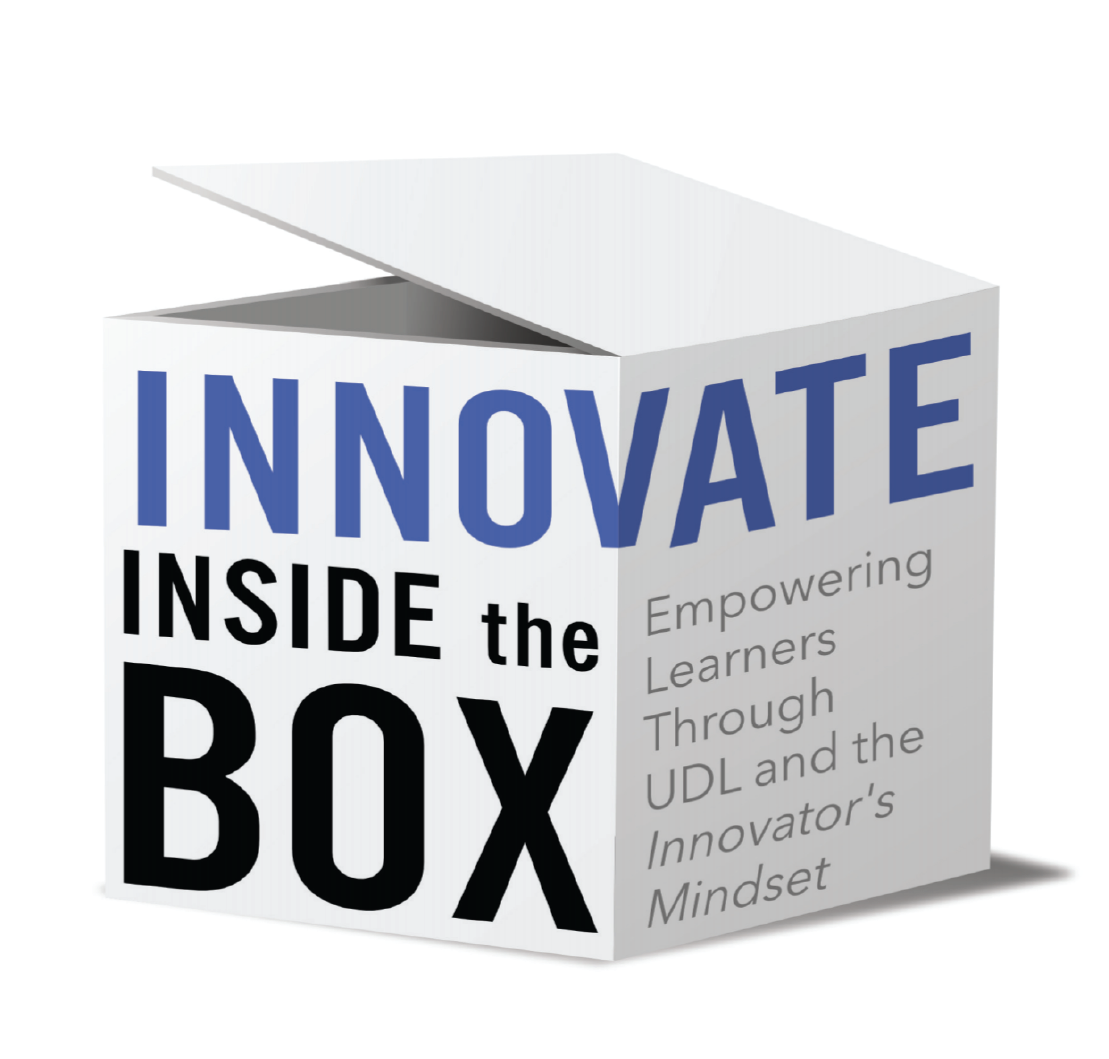#InnovateInsideTheBox Book Study (Starting September 15, 2019)

Katie Novak and I are really excited to announce the #InnovateInsideTheBox book study, starting September 15, 2019, over on Facebook. This book study will go over a 4 week period and is an opportunity to not only dig in deeper into the content of the book with Katie and me but will also be a space for people to share ideas and learn from one another as we focus on creating opportunities for purposeful learning for every one of our learners. This book study is one that you can do at your own pace, but also will encourage participants to create multiple means of representation in sharing their learning through the process. To be a part of this, simply do the following:
- Get a copy of “Innovate Inside the Box” if you do not already have one.
- Join the open Facebook group for the book study.
- Comment on this welcome post to introduce yourself.
Although we are “formally” starting the process on September 15, 2019, we are going to give some prompts and facilitate some conversations before the “official” beginning so please feel free to join any time.
Here is the tentative reading schedule for the process:
September 15 – September 21 – Read the Foreword until Chapter 2
September 22 – September 28 – Chapters 3 and 4
September 29 – October 5 – Chapters 5 – 10
October 6 – October 12 – Chapters 11 -14
In addition to participating in the Facebook discussion, we encourage participants to create one post per week (video, audio recording, written post, visual, or anything else) in their own space to share their learning back to the Facebook group. For me, my blog is a great space to create this learning as it allows for multiple ways to embed different mediums, but you might also be able to create this on a Twitter, Instagram account, or other sites. The focus is that we want this experience to be one where we create a community but also dive deeper into our own reflective process to deepen learning while modeling different mediums.
If you do not have a Facebook account, you can follow along with the “Innovate Inside the Box” for the weekly prompts.
Although Katie and I will be keeping to a schedule of when we share, we want all participants to go at a pace that works for them. We know that every single month in the school year is extremely busy and we appreciate people taking the time to join. This is your experience so you make it what you want!
We look forward to working through this process! It is my first time using Facebook for a book study so hopefully, it is a good experience for all! Thank you and we look forward to seeing you in the book study!




 Change can be hard and we have to make the choice to change. In this chapter, you will learn more about the importance of moving forward and how building relationships and understanding the journey ahead will help us as we move forward.
Change can be hard and we have to make the choice to change. In this chapter, you will learn more about the importance of moving forward and how building relationships and understanding the journey ahead will help us as we move forward. The final two chapters are about you and what you will choose to do with the information you have gained from
The final two chapters are about you and what you will choose to do with the information you have gained from 










